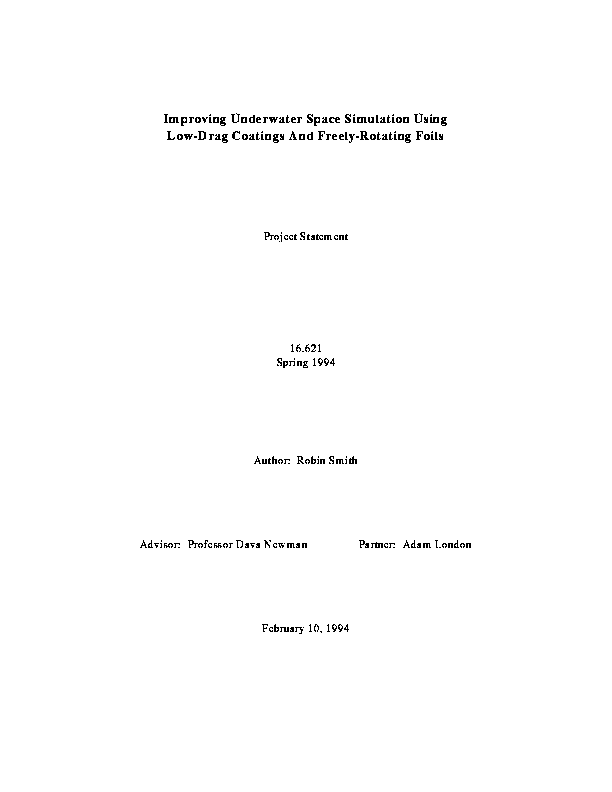
The testing will take place in a water tank of the Ocean Engineering laboratory. For each test, the arm will be submerged in the water and drag measurements will be taken for a fixed pattern of motion. One end of the arm will be stationary in the tank, mounted on a post. Motion of the arm about this end as well as in the joint will be achieved using a motor, controlled form outside of the tank. Using the equipment and instrumentation available in the Ocean Engineering laboratory, drag measurements will be taken for a variety of test conditions.
Initially, drag measurements will be made using the original model. The various coatings will then be placed on the model in an attempt to reduce the drag from the water, and new drag measurements will be taken for each. Finally, the rotating foil will be attached to the model and additional data will be collected.
In addition to the drag felt by the arm, there is also drag on the equipment used during the mission. In order to model this, a weight will be attached to the end of the arm and drag measurements will be taken again for the case of the uncoated arm, the coated arm, and the model with the rotation foil. In an attempt to further reduce the drag, these three cases will be tested again, with a low drag coating applied to the weight.
In 16.620, the design of the arm, the selection of materials, and the research of related experiments will be completed. The following term in 16.622, the actual construction of the arm will take place. Data will be collected for the original model, the coated arm, and the arm with the freely rotating foil for the case with nothing attached, then with a weight attached, and finally with a coated weight attached. The results will then be analyzed and conclusions about the effects of the low-drag coating and the freely rotating airfoil on the drag will be drawn.
ebarrett@mit.edu schiu@mit.edu